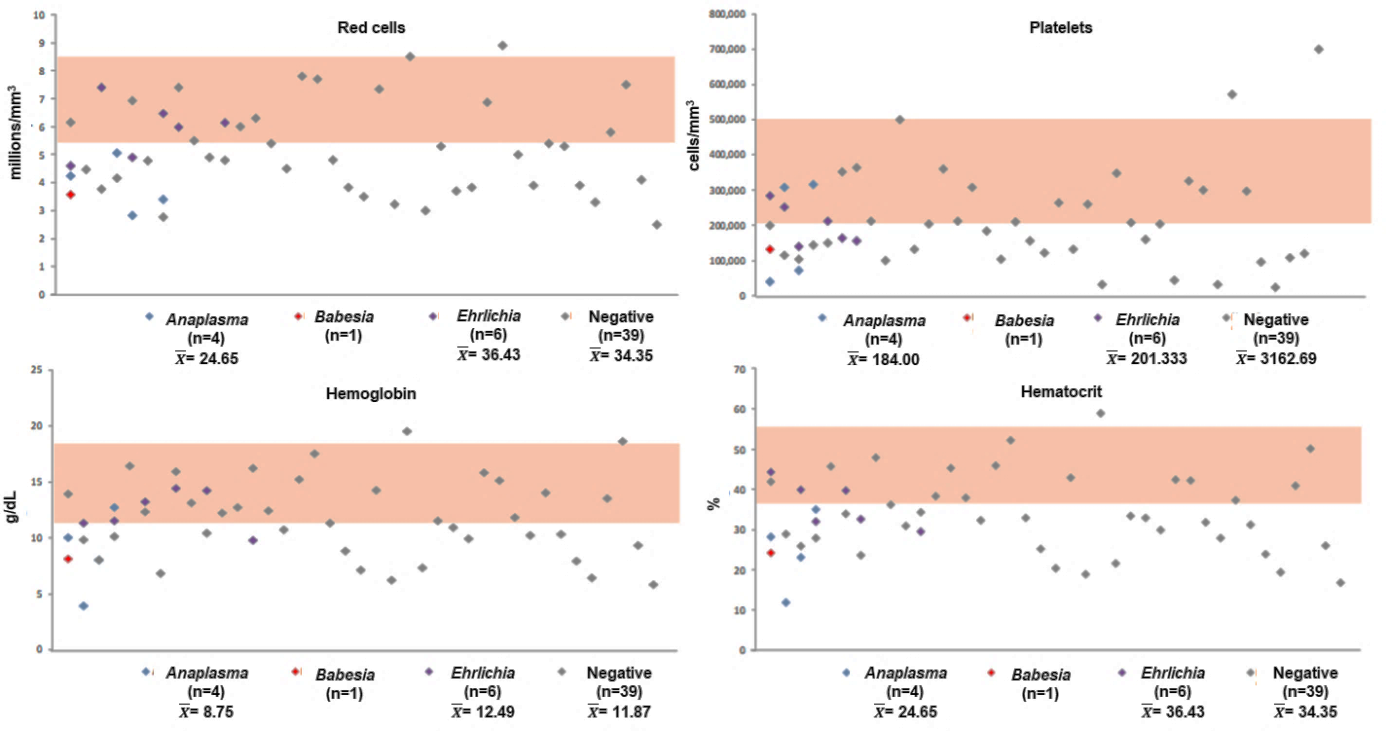Occurrence of tick-borne diseases in domestic dogs in Belém, Pará, Brazil
DOI:
https://doi.org/10.21708/avb.2021.15.4.10133Resumen
Tick-borne blood cell pathogens, which are challenging to diagnose, are primarily detected using molecular techniques. Therefore, this study aimed to detect the main infectious agents involved in 50 cases of suspected hemoparasitosis in dogs treated at the Veterinary Hospital Mário Dias Teixeira of the Federal Rural University of the Amazon. Hematological parameters were evaluated, and blood samples were subjected to polymerase chain reaction (PCR) assays for DNA amplification of the following species: Ehrlichia canis, Anaplasma platys, and Babesia canis. The PCR test results indicated that the most prevalent infectious agent was E. canis, present in 12% (6/50) infected animals, followed by A. platys and B. canis, present in 8% (4/50) and 2% (1/50) infected animals, respectively. Regarding hematological analysis, the most relevant changes were anemia, lymphopenia, thrombocytopenia, leukocytosis, and leukopenia. The availability of molecular techniques allows the management pf the most appropriate treatment to infected animals in a rapid and specific way.
Descargas

Descargas
Publicado
Número
Sección
Licencia
Autores que publicam na Acta Veterinaria Brasilica concordam com os seguintes termos: a) Autores mantém os direitos autorais e concedem à revista o direito de primeira publicação, com o trabalho simultaneamente licenciado sob a Licença Creative Commons Attribution que permite o compartilhamento do trabalho com reconhecimento da autoria e publicação inicial nesta revista. b) Autores têm autorização para assumir contratos adicionais separadamente, para distribuição não-exclusiva da versão do trabalho publicada nesta revista (ex.: publicar em repositório institucional ou como capítulo de livro), com reconhecimento de autoria e publicação inicial nesta revista. c) Autores têm permissão e são estimulados a publicar e distribuir seu trabalho online (ex.: em repositórios institucionais ou na sua página pessoal) a qualquer ponto antes ou durante o processo editorial, já que isso pode gerar alterações produtivas, bem como aumentar o impacto e a citação do trabalho publicado (Veja O Efeito do Acesso Livre).


 Esta obra está licenciada com uma Licença
Esta obra está licenciada com uma Licença 